Geraniums, Crane’s-bills and Stork’s-bills is a guest blog from the wonderful Stewart Roberts, a local naturalist who shares his knowledge of nature and Welsh folklore on his wonderful Facebook page, where his illustrates his posts with his excellent wildlife photos.
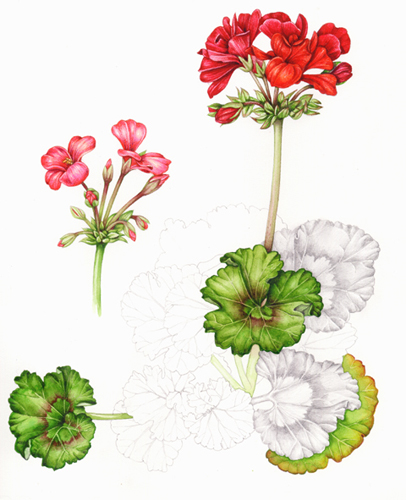
Potted Geranium from the garden centre
The Geranium family
Hardy Geraniums and the half-hardy pot plants Pelargoniums are well known garden plants, originally from South Africa. However, there are also several types of hardy geranium native to the UK.
All have attractive little flowers and ferny foliage, and provide nectar for many insects throughout spring, summer and autumn.
Geranium species have a distinctive mechanism for seed dispersal. This consists of a beak-like column which springs open when ripe and disperses seeds. The common name ‘cranesbill’ refers to this feature which is shared with another family of plants known as ‘storksbills’ (Erodium sp.). However, not all native geraniums share this feature.
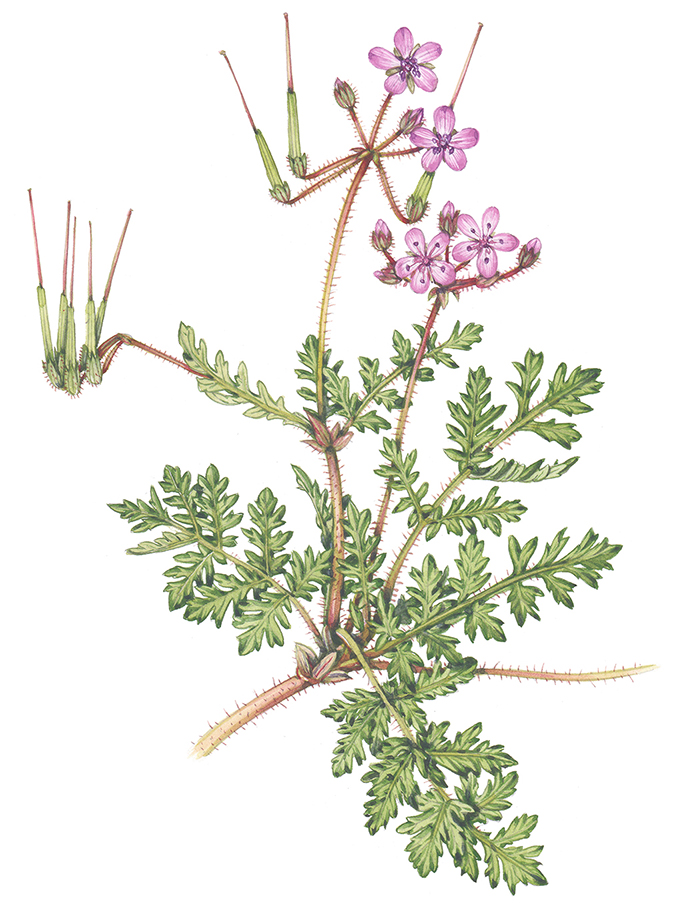
Common stork’s bill Erodium Cicutarium
Common UK Geranium species
Some of the most common species are listed below:
The Bloody crane’s-bill Geranium sanguineum (not pictured), is named after its deep magenta flowers. This wild flower is generally found in limestone areas and on sand dunes.
The Meadow crane’s bill Geranium pratense has a larger blue flower. As the name suggests, you can find it in fields and meadows.
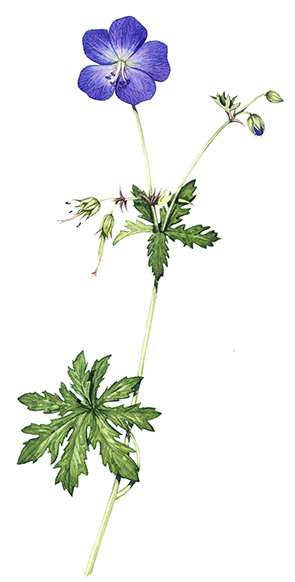
Meadow crane’s bill Geranium pratense
Cut-leaved crane’s-bill Geranium dissectum, as the name suggests, has a much more dissected foliage, and less flowers than the two below. The flowers are much smaller, and a bright pink.
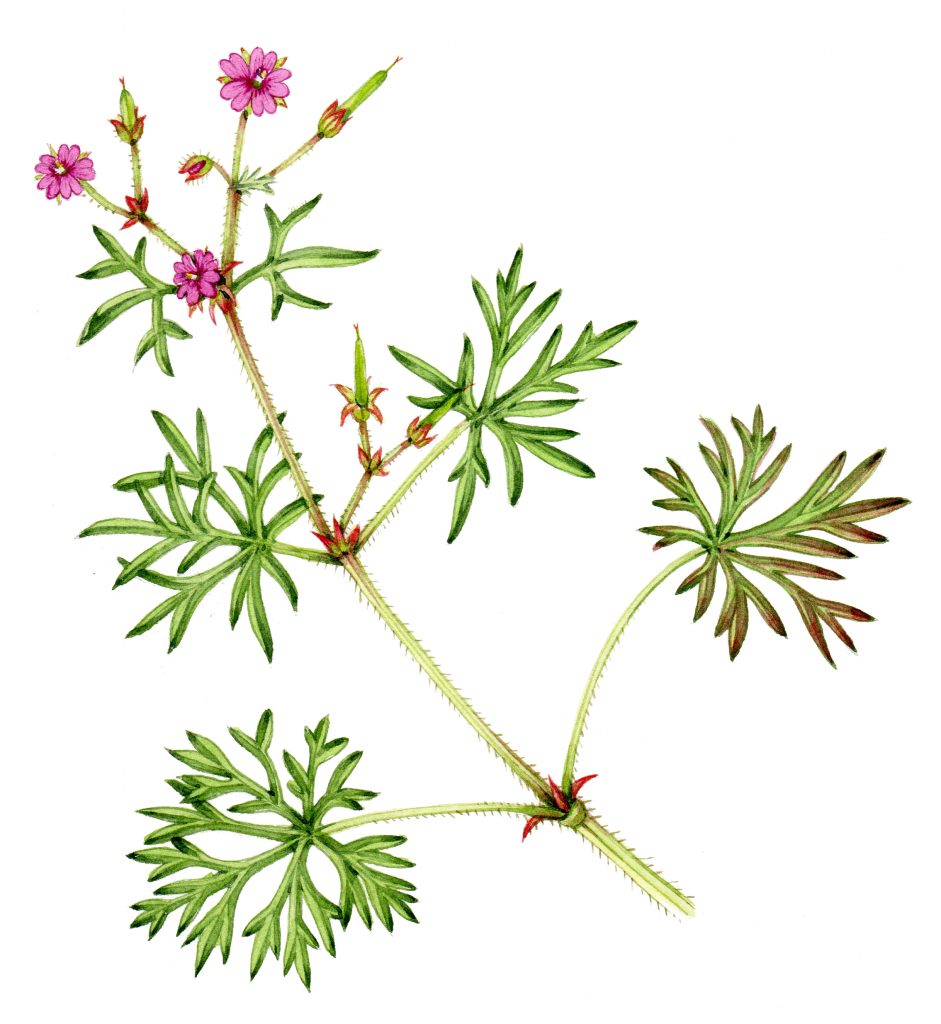
Cut-leaved crane’s-bill Geranium dissectum
Shining crane’s-bill Geranium lucidum has glossy foliage, and is the first of the family to pop up in hedgerows. As with others in this family, sometimes the leaves can be bright scarlet. The high reflective gloss on the rounded leaves make it easy to recognise.
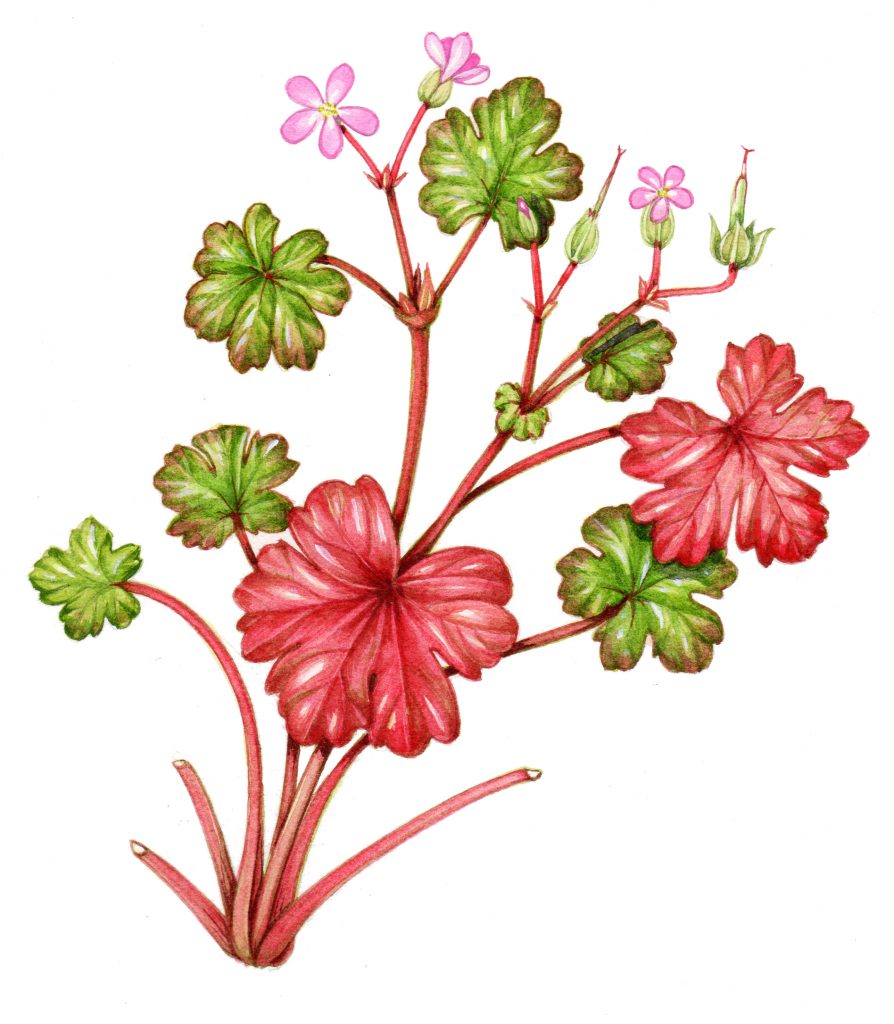
Shining cranesbill Geranium lucidum
Hedgerow crane’s-bill Geranium pyrenaicum (also known as Pyrenean crane’s-bill) is less common than some of the other native geraniums. However, where it is found, it flowers well into autumn and winter. Its flowers are a somewhere between the blue-purple of the Meadow cranes-bill, and the bright pink of the other species.
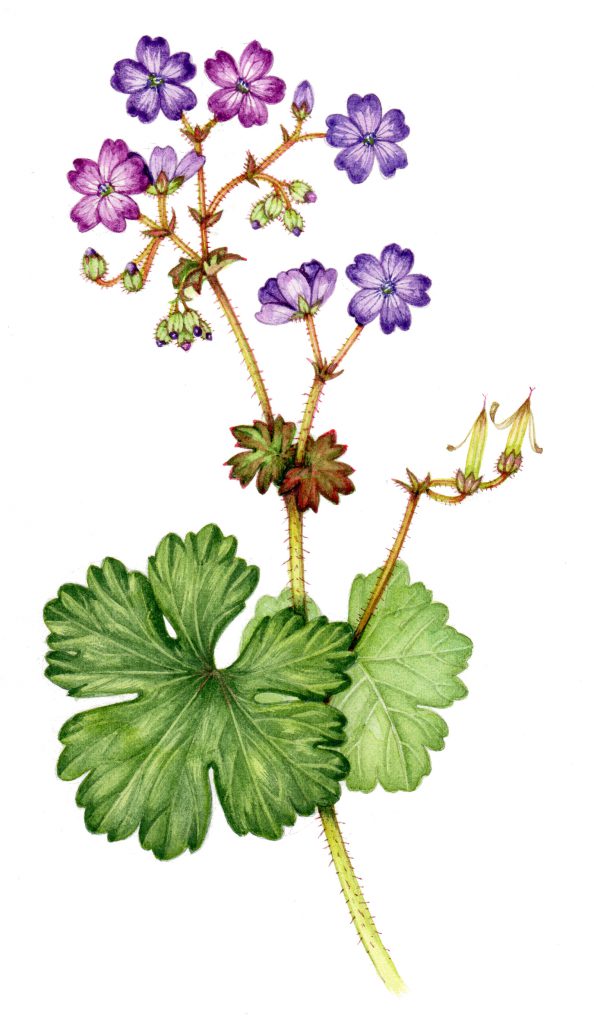
The most common species of Crane’s-bill is Herb Robert Geranium robertianum. This plant is found in woodland, hedgerow and roadside verges; in sun and shade. It’s common in gardens, too. Even if you don’t recognize its leaves and pink flowers, it has a memorable strong musky odour, especially when bruised.
In sunny sites its stems turn a bright crimson red. This is probably where it got its name. ‘Robert’ is a a corruption of ‘rubra’ or red. Alternatively, it may be named after an 11th century monk. He is said to have utilised it for its antiseptic properties, and as a treatment for nosebleeds and stomach aches.

Herb robert Geranium robertianum
The family name Geranium comes from the Greek ‘geranos’ which is a crane (bird with long beak). Obviously, this refers to the family-specific beaked seed pods.
The post Geraniums, Crane’s-bills and Stork’s-bills appeared first on Lizzie Harper.




